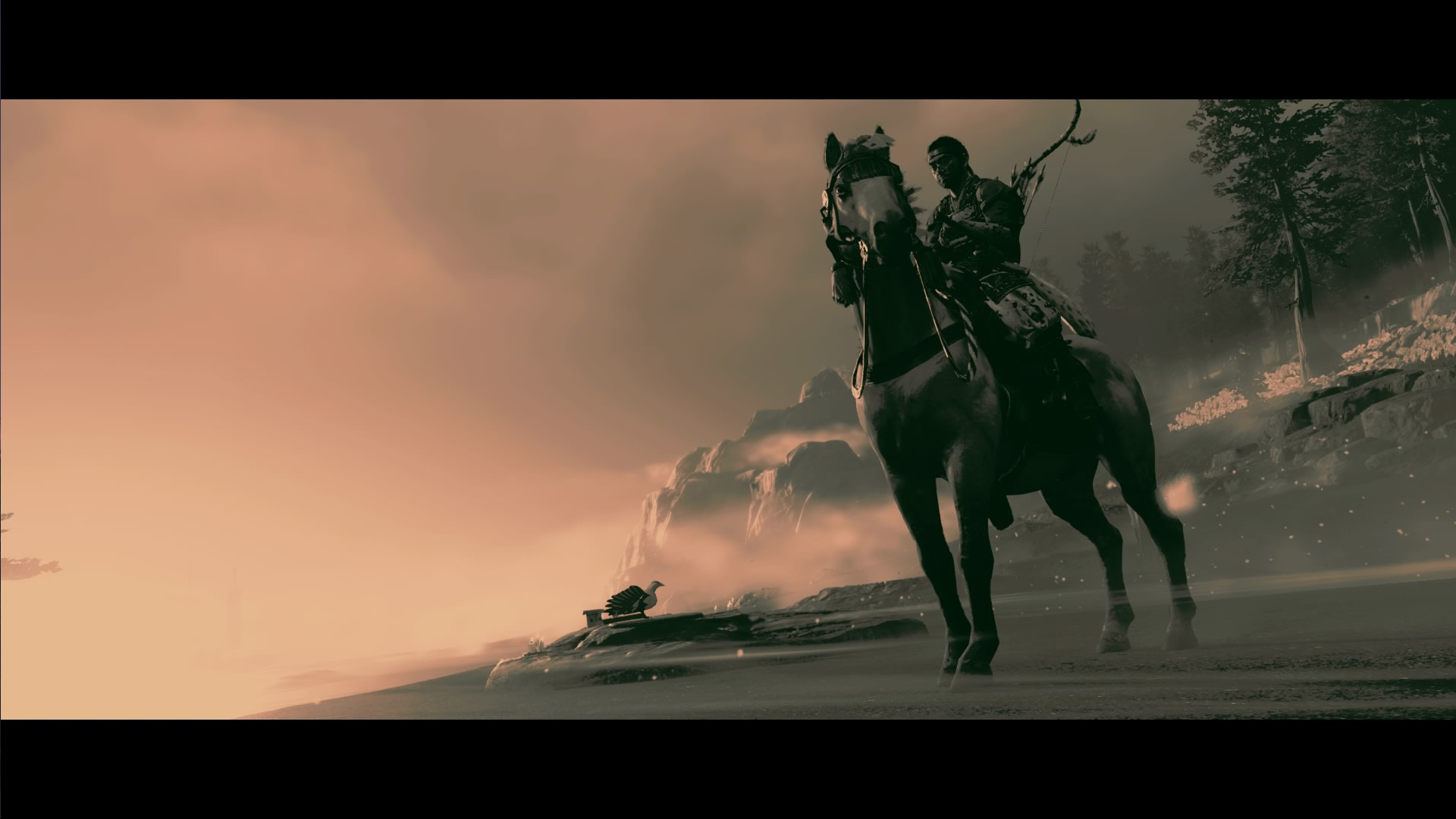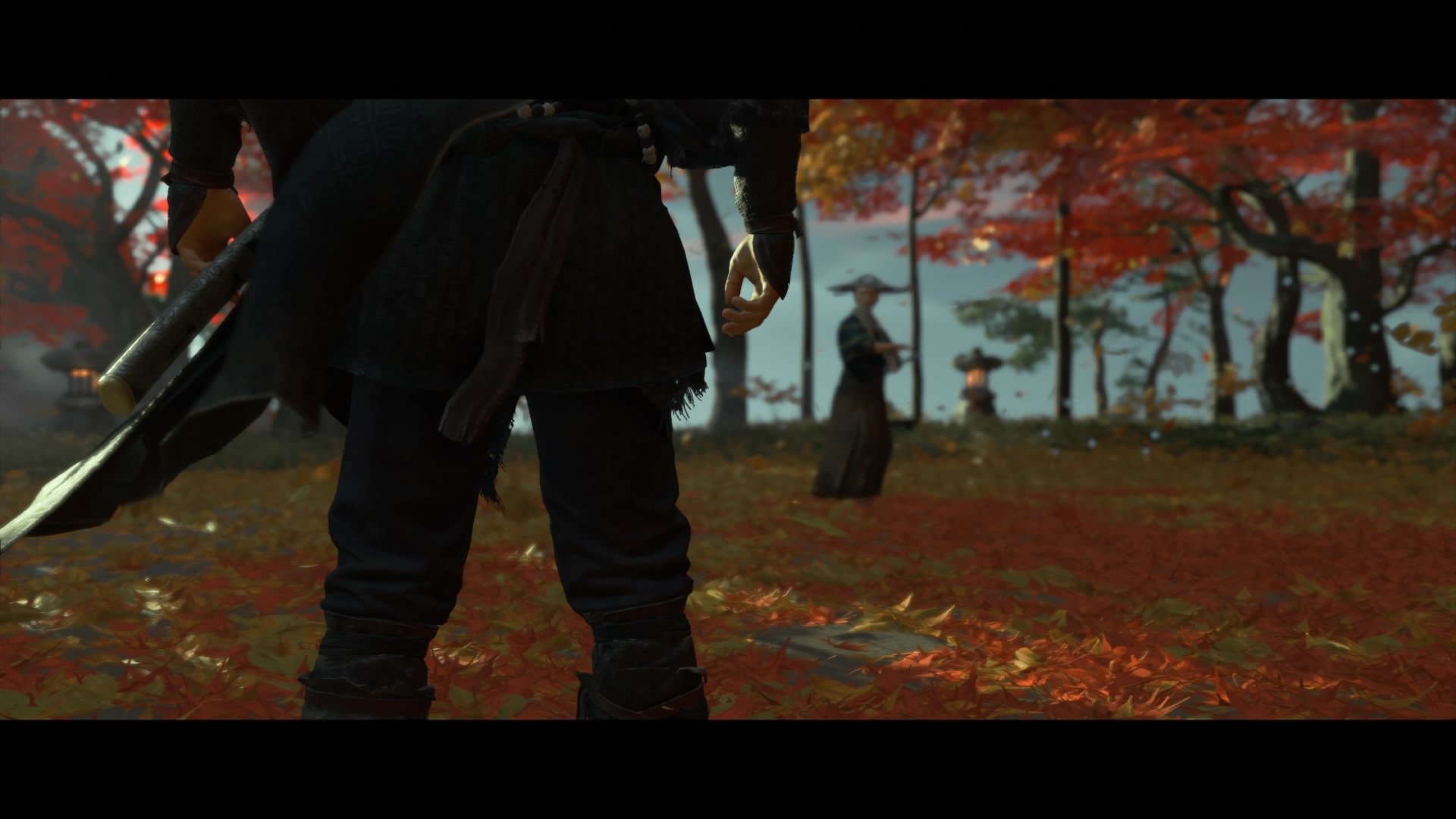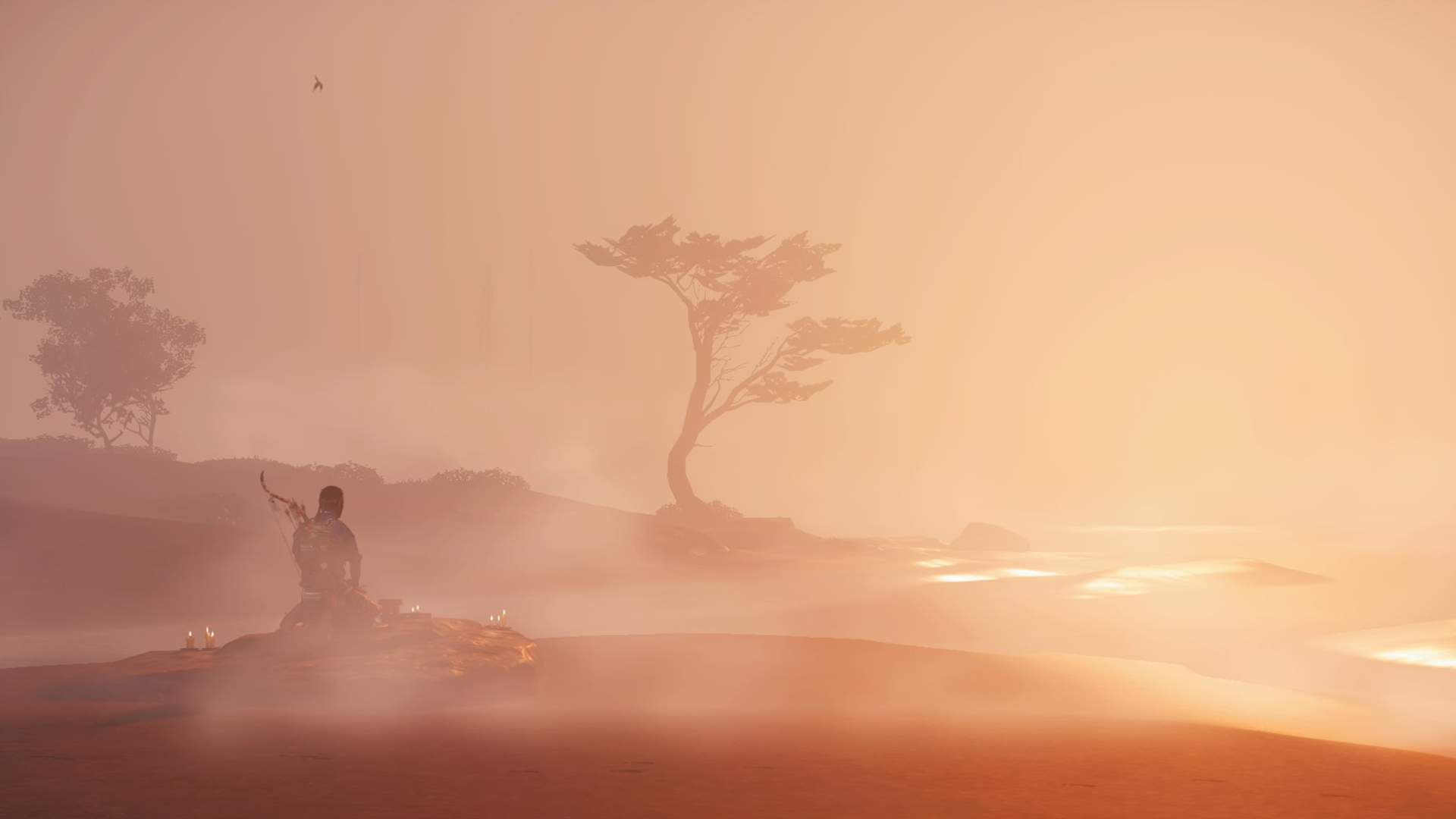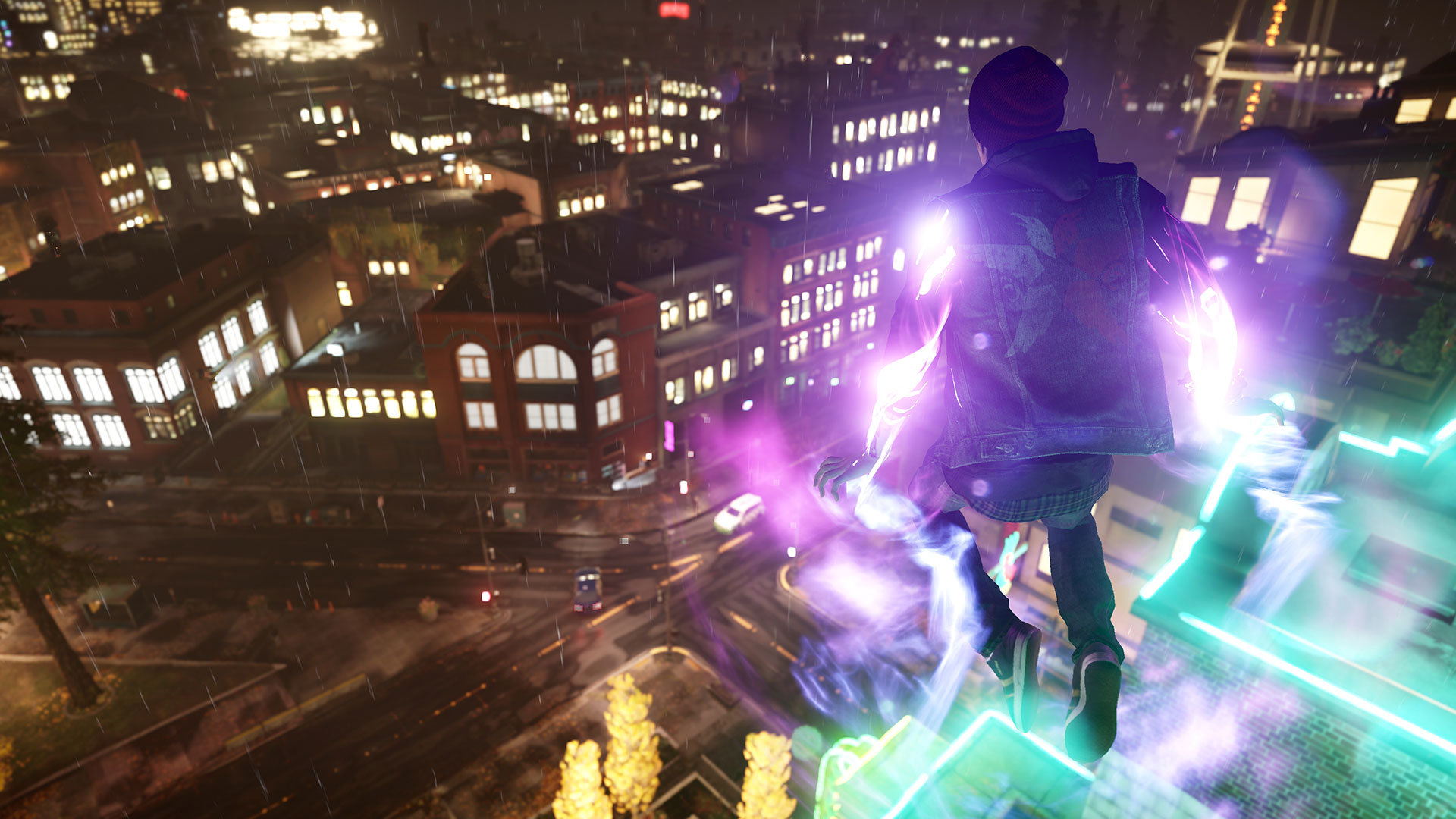
Sucker Punch Productions is seeing out the generation in the same way that it saw it in, by unleashing a massive open world adventure game. The studio has spent much of the last six years penning its love letter to samurai cinema, Ghost of Tsushima; it is undoubtedly worlds apart from the punkish sprawl of the title that preceded it, Infamous: Second Son.
The truth is, this is an important milestone for the generation. Infamous: Second Son was the first post-launch, first-party exclusive for PS4, landing just four months after the console's release in 2013. Ghost of Tsushima is the last first-party exclusive for PS4, landing just four months out from the suspected release of the PS5. Speaking with Jason Connell, creative and art director at Sucker Punch, he assures me that the studio never planned to bookend the generation. "The length of time that it can take to create something new is… you know what, when you look back on it and you count it up, it really is staggering, isn't it? Like, wow, that took a long time," he says, laughing.
Developing an idea

Ghost of Tsushima represents the longest stretch of development Sucker Punch has ever endured as a studio. Six years between releases may seem like an eternity for players, but Connell tells me that, for the team, it was business as usual. "It didn't really feel that way while we were working on it. We would have these milestones every six weeks, which is where you'd see what the team had contributed to the game and come up with new philosophies for the way we were making the game."
Those philosophies have evolved over the years, although the studio never veered from its initial dream of casting you in the role of a Samurai in an exotic, open-ended overworld. "After Second Son, Nate [Fox, game director] and I were trying to figure out what fantasy we wanted to make next. Sly Cooper was about a thief; Infamous was about a superhero; so we are writing these ideas down and we got to Samurai and were like, wait, that sounds awesome," says Connell. "I felt like I hadn't played that game and I would love to make it. It was exciting."
"As you can imagine, over six years, the idea evolved a tonne. But I think you have to embrace the fact that things are going to change and shift; you're going to change direction, and you're going to get curve balls thrown at you. You have to embrace what you initially set out to make, and it's a dream come true if you can create that by the end," he says, adding, "fast forward many years later and now Ghost of Tsushima is out there – we made our samurai open world game."

"My team wasn't upset with me, but they definitely poked me pretty hard about that statement."
Jason Connell, Sucker Punch
Speaking of curve balls, Connell is actually responsible for throwing one at his team back in 2017. Ghost of Tsushima was a surprise reveal at that year's Paris Games Week, although with little more than a teaser trailer to go on we all had a lot of questions and few answers. One that made waves at the time came after Connell teased that "player choice in this game will mean something very different than other games we've made in the past", before going onto claim that Ghost of Tsushima would not only feature no waypoints but that navigation would be driven almost entirely by curiosity in the world itself. Years later, he's willing to admit that he went off script on that one.
"It's funny you ask that, I'm so glad that someone finally asked me this question," Connell says, breathing a sigh of relief. "My team wasn't… they weren't upset with me, but they definitely poked me pretty hard about that statement."
Weekly digests, tales from the communities you love, and more
"At that point in time, if you were to play our game, some of those elements totally existed. The beauty was there. You'd be like, 'well, what's in that forest? What's on top of that mountain? Look, there's a cool shrine!' but the concept was not embedded deeply in every aspect of the game. And now, over the course of a couple of many years, it found its way to being – for the most part – a pretty true statement about our game. I think that, uh, I think I have to thank the team for that because they went and actually came up with the cool ideas to make it happen," he says, adding, "it was a fun part of development because of that particular quote."
The Cranes are a lie


Want the final verdict on Sucker Punch's first game in six years? Then you'll need to read our Ghost of Tsushima review.
While it's certainly true that Ghost of Tsushima isn't free of criticism, it is undoubtedly a landmark game for Sucker Punch. Its world is a triumph, a gorgeous space that you'll desperately waste hours away exploring. We went into detail on its construction with Connell in a separate feature, exploring how Ghost of Tsushima succeeds by finding space for quiet reflection in a world scarred by violence.
The sparsity of Tsushima Island is an incredible departure from the Infamous games, the dense urban expanse that Second Son was contained within in particular. As different as the games are, Connell tells me that Ghost of Tsushima wouldn't have been possible without first going through the experience of releasing Second Son in 2014. "We learned a lot by making our first game for PS4 – one of the first big games on the platform. We had to learn how to make the graphical fidelity impressive and... you know, we're not a huge AAA team. We're a big team by standards of indie studios, obviously, but we don't have thousands of people at the studio – there's like 160 people here."
"So when we were creating Second Son, we knew we couldn't create every rendering feature known to Earth. We had to work out what could create a gritty, realistic, and wet version of Seattle and focus our energy on that. We spent all of our time working on the powers and on making wet Seattle," he laughs, explaining that the studio had to stick to this philosophy strictly; as much as it wanted to explore new rendering techniques to take advantage of the newfound power of the PS4, it had to reign in its ambitions if it ever wanted to ship the title. Game design is about creatively cutting corners to get the best results, after all.
"That philosophy actually held true when we moved to Ghost of Tsushima as we were trying to create a beautiful, serene, and nature-filled open world feudal Japan. Some of the tech actually carried over, such as what we used to create the wet environments and how we used particles in cool new ways," says Connell, before surrendering an example. "The birds; the Cranes in our game, that you see flying off from you, they aren't actual animated rigs... they are particles."
Moving on from Infamous

While many of these development philosophies certainly helped Sucker Punch deliver Ghost of Tsushima to the quality that we see it is today, it also can't be understated just how disruptive the switch between projects would prove to be. Connell tells me that the art and environmental teams, in particular, had a hard time shifting from the "punk rock" aesthetic of Infamous to the more post-rock, "take a moment to chill" vibe that carries throughout Ghost of Tsushima. If you're wondering why this game took so long to come out, this is undoubtedly it.
"We had a practised style. It was grungy. Full of graffiti and trash, rain and loud car exhausts, loud music and punk rock, you know. It was just this huge shift, explains Connell, noting that this reverberates out across every department. It disrupts almost every one of the established design philosophies and practises that the teams have in place, right down to how the team puts texture into the environment for Ghost of Tsushima. "Think about how we even texture something like wood. Suddenly it's like, okay, we don't want to be grungy, we want to be minimal and we want the wood to create less noise."
"We needed almost painted, realistic wood, but we have all of this imperfect, scanned, noisy wood – it's hard, this is a hardship! We had to create tools in our engine with 'view-modes' that you can turn on in debug that would show us noisy textures on the screen or highlight textures that are too noisy in comparison to the rest. You could look at it and say 'hey, this tree bark is a little too noisy'," he says, noting that this level of granular attention to detail was important for the studio. "We wanted to try and create a unified look as much as possible, because it's in a different style. That's just one example, but it was a pretty big shift for us."

For Connell, he says it was all worth it to deliver on the studio's initial vision of putting you in an expansive open world as a Samurai. For as different as Infamous: Second Son and Ghost of Tsushima are in just about every respect, there is a shared philosophy behind them both. Sucker Punch makes games that let you fulfil a fantasy, and it's something Connell is proud to be able to do at Sucker Punch.
"I know some people are maybe fatigued on the standard open world experience, but I quite like games that let me have a sense of escapism. Games that let me roam a beautiful countryside, or a place that I've always wanted to go but couldn't because it's hundreds of years in the past, or maybe I can't fly there because of the pandemic. To me, I think that having a true open world, where there's an express sense of freedom – where you can, for the most part, go do whatever you want – I don't know, man, that's a sense of agency you don't find too often in many other games. That's integral to the way that we think."
Ready to learn more? We spoke with six creative leads at Sucker Punch Productions to find out what movies, games, and books inspired Ghost of Tsushima.
Ghost of Tsushima tips | Ghost of Tsushima map | Ghost of Tushisma armor | Ghost of Tsushima skills | Ghost of Tsushima supplies | How to get the Ghost of Tsushima grappling hook | Ghost of Tsushima fox dens and inari shrines| Ghost of Tsushima bamboo strikes | Ghost of Tsushima hot springs | Ghost of Tsushima Shinto Shrines | Ghost of Tsushima Komatsu Forge | Ghost of Tsushima duels

Josh West is the Editor-in-Chief of GamesRadar+. He has over 15 years experience in online and print journalism, and holds a BA (Hons) in Journalism and Feature Writing. Prior to starting his current position, Josh has served as GR+'s Features Editor and Deputy Editor of games™ magazine, and has freelanced for numerous publications including 3D Artist, Edge magazine, iCreate, Metal Hammer, Play, Retro Gamer, and SFX. Additionally, he has appeared on the BBC and ITV to provide expert comment, written for Scholastic books, edited a book for Hachette, and worked as the Assistant Producer of the Future Games Show. In his spare time, Josh likes to play bass guitar and video games. Years ago, he was in a few movies and TV shows that you've definitely seen but will never be able to spot him in.


